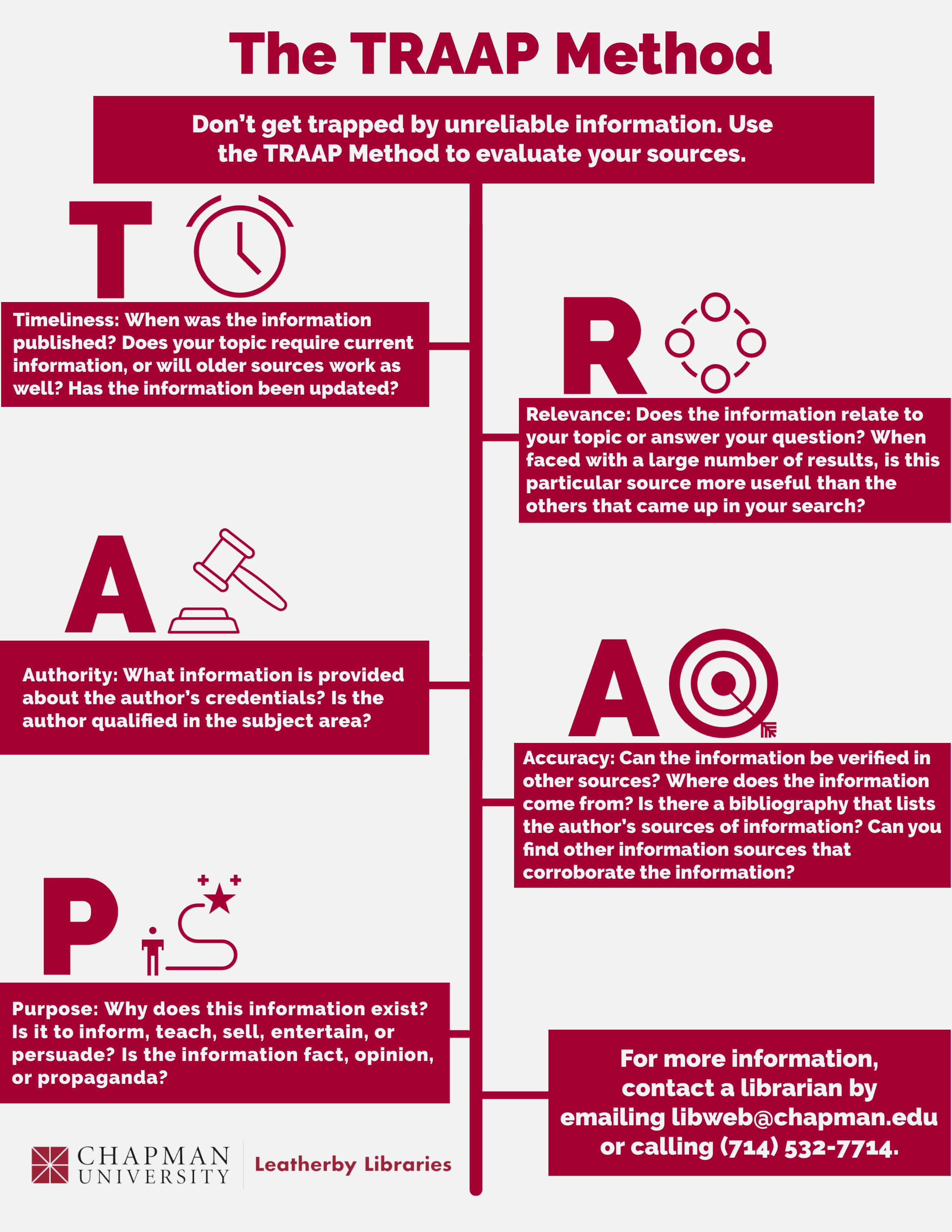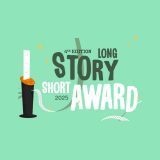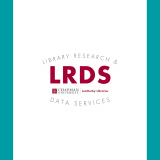Leatherby Libraries TRAAP Method Helps Students Find Reliable Information
October 12, 2020
In a world over-saturated with easily accessible information, information literacy, as defined by Association of College & Research Libraries (ACRL) as “The set of integrated abilities encompassing the reflective discovery of information, the understanding of how information is produced and valued, and the use of information in creating new knowledge and participating ethically in communities of learning,” is more important each day. Information literacy is at the heart of the library instruction that Leatherby Libraries librarians offer to Chapman University students.
One of the methods that Leatherby Libraries librarians use to teach Chapman University students the basics of information literacy is called the TRAAP method. The word TRAAP is an easy to remember acronym that stands for Timeliness, Relevance, Authority, Accuracy, and Purpose. Each of these terms is a criterion for evaluating any source of information and is especially effective as students face a plethora of information online:
Timeliness: When was the information published? Does your topic require current information, or will older sources work as well? Has the information been updated?
Relevance: Does the information relate to your topic or answer your question? When faced with a large number of results, is this particular source more useful than the others that came up in your search?
Authority: What information is provided about the author’s credentials? Is the author qualified in the subject area?
Accuracy: Can the information be verified in other sources? Where does the information come from? Is there a bibliography that lists the author’s sources of information? Can you find other information sources that corroborate the information?
Purpose: Why does this information exist? Is it to inform, teach, sell, entertain, or persuade? Is the information fact, opinion, or propaganda?
Using this method, which is adapted from a similar method developed by Sarah Blakeslee and other librarians at California State University, Chico (CSU Chico), students can evaluate which sources are best suited for their information needs, setting them on the path to being excellent researchers and consumers of information.
For more information about how to effectively evaluate information resources, students can contact the Leatherby Libraries Reference Desk, their subject liaison librarian, or Taylor Greene, the Chair of Instructional Services.



